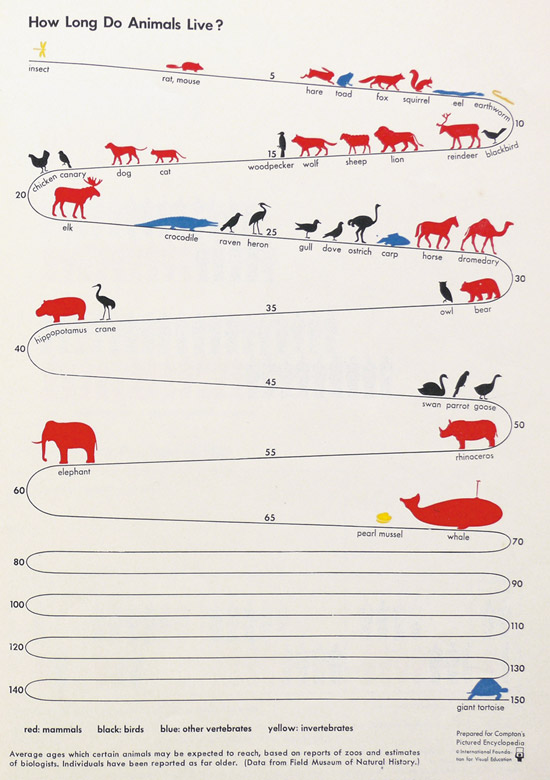

There are numerous plants and animals for which the mortality rate has been observed to actually decrease with age, for all or part of the life cycle. If the mortality rate of a species does not increase after maturity, the species does not age and is said to be biologically immortal. Additionally, some organisms maintain the capability to reproduce through very long periods of metabolic dormancy, during which they may not be considered "alive" by certain definitions but nonetheless can resume normal metabolism afterward it is unclear whether the dormant periods should be counted as part of the organism's lifespan. Identifying the longest-living organisms also depends on defining what constitutes an "individual" organism, which can be problematic, since many asexual organisms and clonal colonies defy one or both of the traditional colloquial definitions of individuality (having a distinct genotype and having an independent, physically separate body).

In many cases the ages listed below are estimates based on observed present-day growth rates, which may differ significantly from the growth rates experienced thousands of years ago.

This list includes long-lived organisms that are currently still alive as well as those that are dead.ĭetermining the length of an organism's natural lifespan is complicated by many problems of definition and interpretation, as well as by practical difficulties in reliably measuring age, particularly for extremely old organisms and for those that reproduce by asexual cloning. The definition of "longest-living" used in this article considers only the observed or estimated length of an individual organism's natural lifespan – that is, the duration of time between its birth or conception, or the earliest emergence of its identity as an individual organism, and its death – and does not consider other conceivable interpretations of "longest-living", such as the length of time between the earliest appearance of a species in the fossil record and the present (the historical "age" of the species as a whole), the time between a species' first speciation and its extinction (the phylogenetic "lifespan" of the species), or the range of possible lifespans of a species' individuals.


 0 kommentar(er)
0 kommentar(er)
